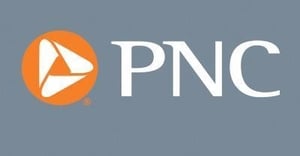 Inflation Also Revised Higher
Inflation Also Revised Higher
- Real GDP growth in the first quarter was revised higher by 0.1 percentage point to 1.4%.
- Real gross domestic income growth was revised lower by 0.1 percentage point to 1.3%.
- Inflation in the first quarter was revised slightly higher; it remains above the Fed’s 2% objective.
- PNC expects slower, but still-solid, economic growth this year.
- Inflation will slow through the rest of 2024, with the FOMC cutting the fed funds rate toward the end of the year.
Real GDP increased 1.4% at an annualized rate in the first quarter of 2024, according to the third estimate from the Bureau of Economic Analysis. Growth was reported at 1.6% in the advance estimate, and 1.3% in the second estimate. The upward revision came primarily from a downward revision to imports — lower imports increase GDP — and upward revisions to business fixed investment and government spending. These were somewhat offset by a downward revision to consumer spending. Real GDP growth slowed from a 3.4% increase in the fourth quarter of 2023 and 4.9% in the third quarter.
Economic growth in the first quarter came from solid gains in consumer spending, business fixed investment, investment in housing, and government. Trade and inventories were drags on growth in the first quarter. Real final sales of domestic product — GDP minus the change in inventories, which measures demand for U.S.-produced goods and services — rose 1.8% in the first quarter.
Real gross domestic income — an alternative measure of the size of the economy based on income going to households and firms from economic activity — was revised lower, to 1.3% annualized growth, from 1.5% in the previous estimate. The downward revisions came primarily from lower reported corporate profits.
On a year-ago basis real GDP was up 2.9% annualized in the first quarter, with real gross domestic income up 1.8%. The discrepancy between GDP and GDI is historically large. The economy is probably expanding at a pace somewhere in the middle of these two measures.
There were upward revisions to inflation measures in the third estimate. The personal consumption expenditures price index increased 3.4% at an annualized rate in the third estimate, revised up 0.1 percentage point from the second estimate. Core PCE inflation, excluding food and energy, was also revised higher by 0.1 percentage point, to 3.7%. On a year-ago basis overall PCE inflation was 2.6% in the first quarter, with core inflation of 2.9%. Both are above the Federal Reserve’s 2% objective.
The third estimate for GDP for the first quarter does not change the outlook much. There was a small upward revision to real GDP growth in the quarter, but a small downward revision to real gross domestic income growth. Consumer spending continues to increase thanks to the strong labor market and rising household incomes and wealth. Business fixed investment was solid in the first quarter, and housing has now added to growth for three consecutive quarters, after being a drag in 2022 and the first half of 2023 with higher mortgage rates. Trade and inventories were drags in the first quarter, but that should prove temporary. But the need for households to increase their saving, the ongoing drag from higher interest rates, and less support from government will all weigh on the economy this year. PNC expects real GDP growth of around 2% this year, slower than in 2023 (3.1%), but close to the economy’s long-run potential.
Inflation in the first quarter was revised modestly higher. But there are indications that after a slight pickup in early 2024, inflation is starting to slow again. The BEA will release PCE inflation data tomorrow for May, which is expected to show slower overall and core inflation, both month-to-month and year-to-year; this is consistent with the consumer price index data for May. Lower energy prices are pushing down overall inflation. Slower housing inflation will contribute to a softening in core inflation. And slowdowns in job and wage growth later this year will contribute to a further slowing in inflation later in 2024. Inflation should be back to the Federal Reserve’s 2% objective, based on the core PCE, by this time next year.
Slower inflation and softer economic growth will give the Federal Open Market Committee leeway to cut the federal funds rate later this year. PNC expects 25 basis point cuts in the fed funds rate at the FOMC’s November and December meetings. This would put the fed funds rate in a range between 4.75% and 5.00% at the end of 2024.
The PNC Financial Services Group, Inc. is one of the largest diversified financial services institutions in the United States, organized around its customers and communities for strong relationships and local delivery of retail and business banking including a full range of lending products; specialized services for corporations and government entities, including corporate banking, real estate finance, and asset-based lending; wealth management and asset management. For information about PNC, visit www.pnc.com.














